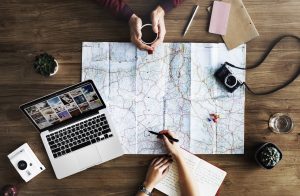Choosing the ideal GPS device is vital to make certain you’re not carrying around a useless gadget when on holidays. Below are some options to consider when buying your device.
Use
What will you mainly use your unit for: driving, hiking, finding your way around the city or simply for peace of mind if you get lost? Not all devices are the same so ensure you decide on a device with your needs in mind. A car navigation system, for instance, is as good as useless when you take it off the main paved road.
Dedicated devices
A growing number of devices are currently integrating real time GPS tracking technology, particularly in smart phones. You may want to consider having one device that can do all you need, instead of having another mobile phone, GPS, and computer.
Portability
The huge majority of GPS devices are intended to be used in automobiles and while for the most part there is very little difference in the basic applications, be certain you chose a device that is suitable for your personal use and freedom.
Runs out of the box?
Some units will do the job straight away, others might want you to download a program onto memory card or other storage device. Should you ever need to reset your device you will likely have to repeat the process- not easy if you are stuck halfway up a mountain.
 Dimensions and weight
Dimensions and weight
The smaller (and lighter) the easier it is to travel with, but do not give up too much on the display dimensions. Typically the smaller units are far more fragile and aren’t always perfect for throwing into a backpack.
Display size
Typically if you’re picking a hand held device it is not vital to have a big display, but when your device is going to be looked at from a distance, you need to be certain that you can make out details.
Screen pixels
The more pixels the better, giving you greater resolution, however make sure you combine this with the dimensions of the display you are choosing also.
Colours
Particularly important for components with terrific information and applications aimed at hikers, the more colours will make the map easier to read and comprehend.
Receiving capability
The higher the amount of channels your device has, the better the reception you will receive. Especially important when you are in thick woods or elsewhere you may not get a clear signal. A 12-channel parallel receiver process is among the best for hiking, as the GPS safety management system is there to guide you.
Graphics processor speed
This is the rate at which the device will refresh the image, important if you are moving quickly (in a car for example) but not the most important aspect if you will only be using your device at walking speed.
Waterproof/shockproof
Always useful but this typically adds a lot to overall price. Think about whether you will really need it until you hand over those additional dollars.
Battery type
Most units operate with a fixed battery and must be directly billed. If you are heading to an area in which a reliable electricity supply isn’t available, you may want to think about a unit that can accept normal batteries.
Map provider
Ensure you opt for a supplier than covers the areas you are traveling to, and ideally do some research to find the best maps you can.
Altitude
While hardly any units have this function (and for the most part, it’s far from essential), if you’re heading outside, it can be interesting to know your elevation.
Trip recording capacities
Using a device that not only shows you where to go, but can show you where you have been can be quite beneficial. It not only provides you the ability to retrace your steps, but you can record your whole trip, from a bicycle ride across France to trekking in the Himalayas.
As soon as you’ve downloaded your path, you can share your journey with the whole world (or only a few close friends).
Price
Normally, you get what you pay for, but not necessarily, and you likely won’t need all of the functions a system includes. Be sure to understand what you are getting (using the standards above) for your cash and keep in mind that even the simplest units will meet most everyday needs.



